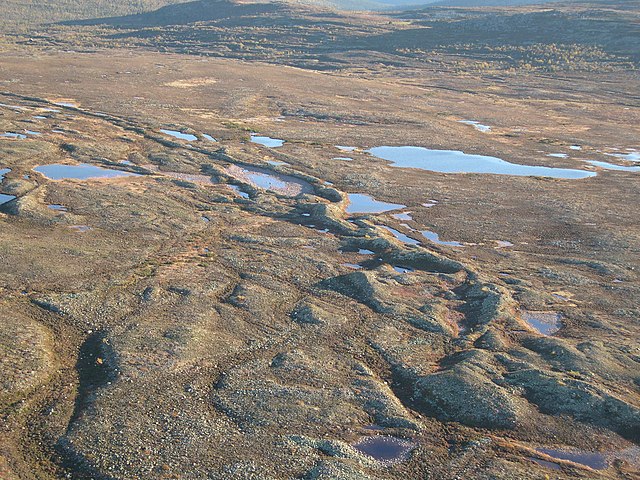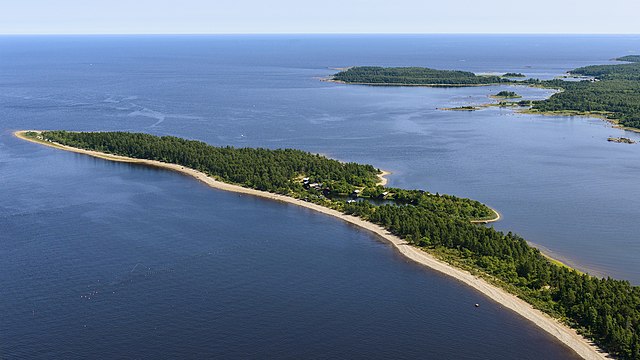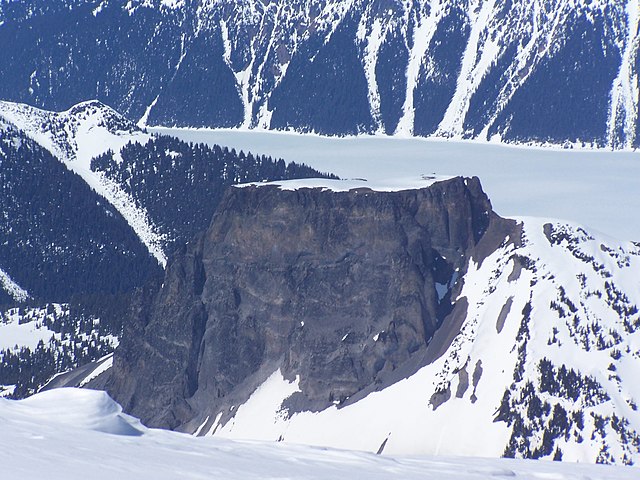An esker, eskar, eschar, or os, sometimes called an asar, osar, or serpent kame, is a long, winding ridge of stratified sand and gravel, examples of which occur in glaciated and formerly glaciated regions of Europe and North America. Eskers are frequently several kilometres long and, because of their uniform shape, look like railway embankments.
Esker at Fulufjället, western Sweden
Aerial view of a partially drowned esker at Billudden in northern Uppland, Sweden. The shape is modified by coastal processes.
Portions of the Denali Highway in Alaska are built on eskers.
Esker in Sims Corner Eskers and Kames National Natural Landmark, Washington, US. (Trees at the edge of the esker and the single lane road crossing the esker to the right of the photo provide scale.)
A ridge is a long, narrow, elevated geomorphologic landform, structural feature, or a combination of both separated from the surrounding terrain by steep sides. The sides of a ridge slope away from a narrow top, the crest or ridgecrest, with the terrain dropping down on either side. The crest, if narrow, is also called a ridgeline. Limitations on the dimensions of a ridge are lacking. Its height above the surrounding terrain can vary from less than a meter to hundreds of meters. A ridge can be either depositional, erosional, tectonic, or a combination of these in origin and can consist of either bedrock, loose sediment, lava, or ice depending on its origin. A ridge can occur as either an isolated, independent feature or part of a larger geomorphological and/or structural feature. Frequently, a ridge can be further subdivided into smaller geomorphic or structural elements.
A mountain ridge in Japan
A strike ridge within the Appalachian Mountains.
The edges of tuyas can form ridges.
Pirin Mountain main ridge – view from Koncheto knife-edge ridge towards the pyramidal peaks Vihren and Kutelo








